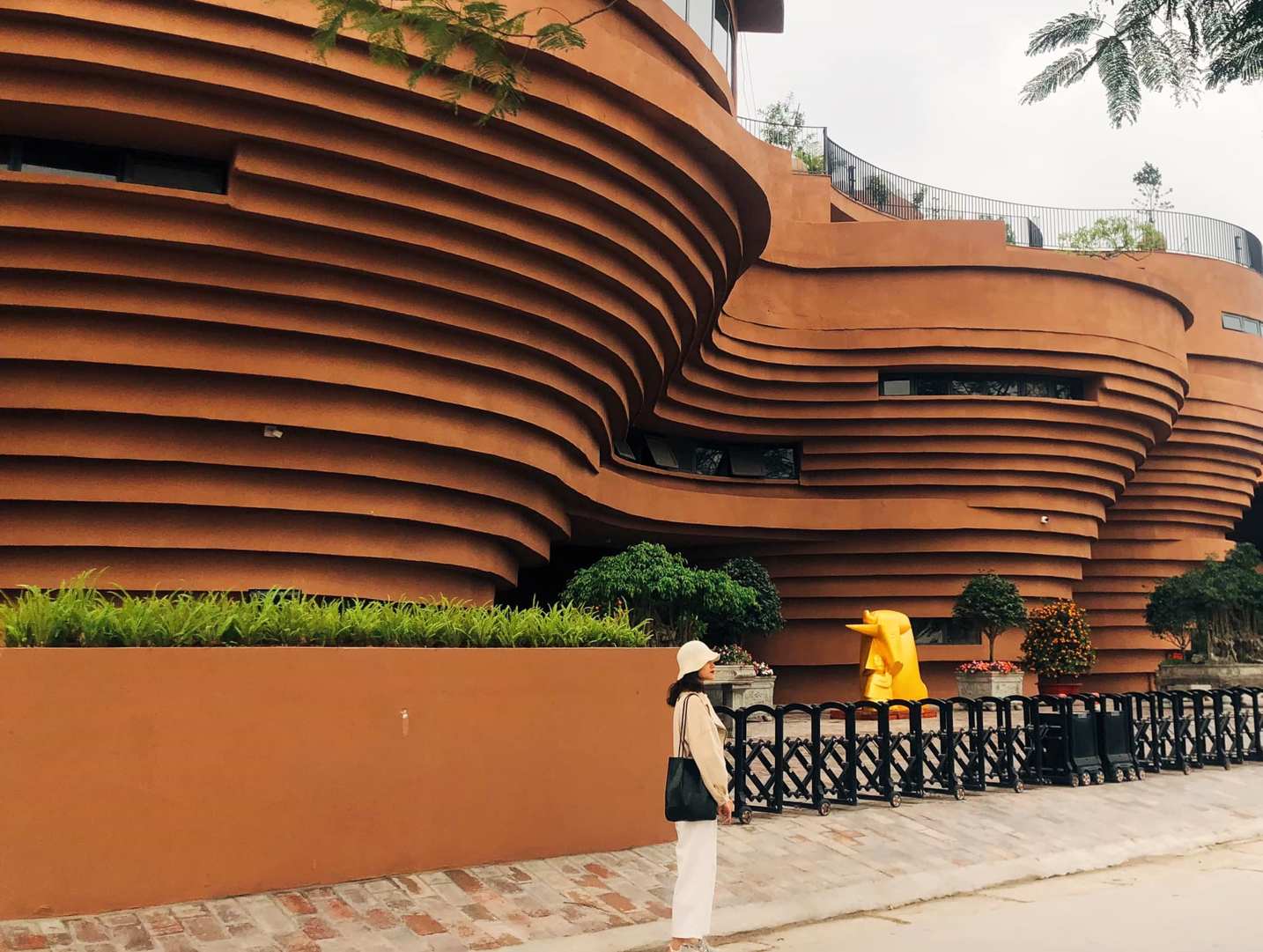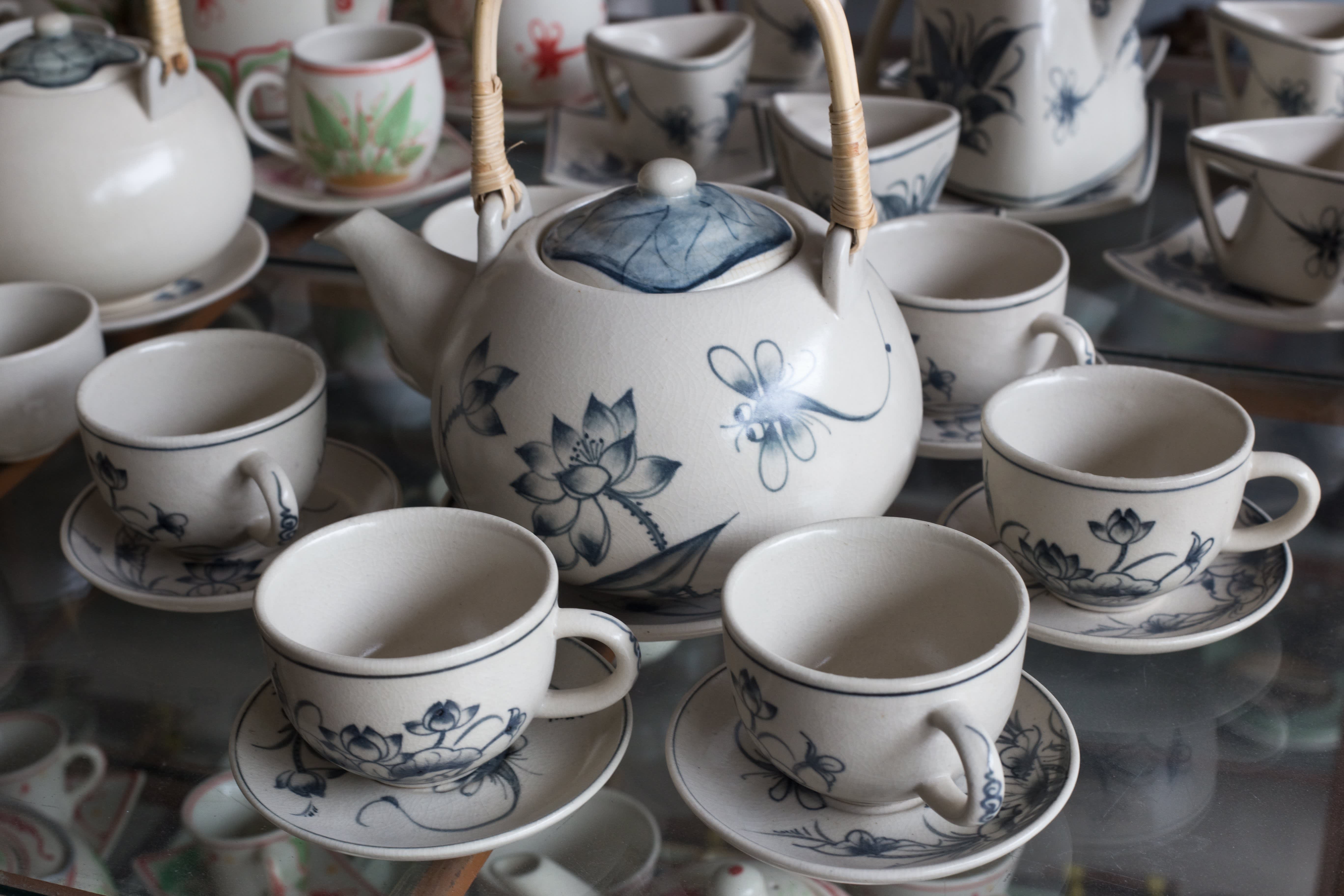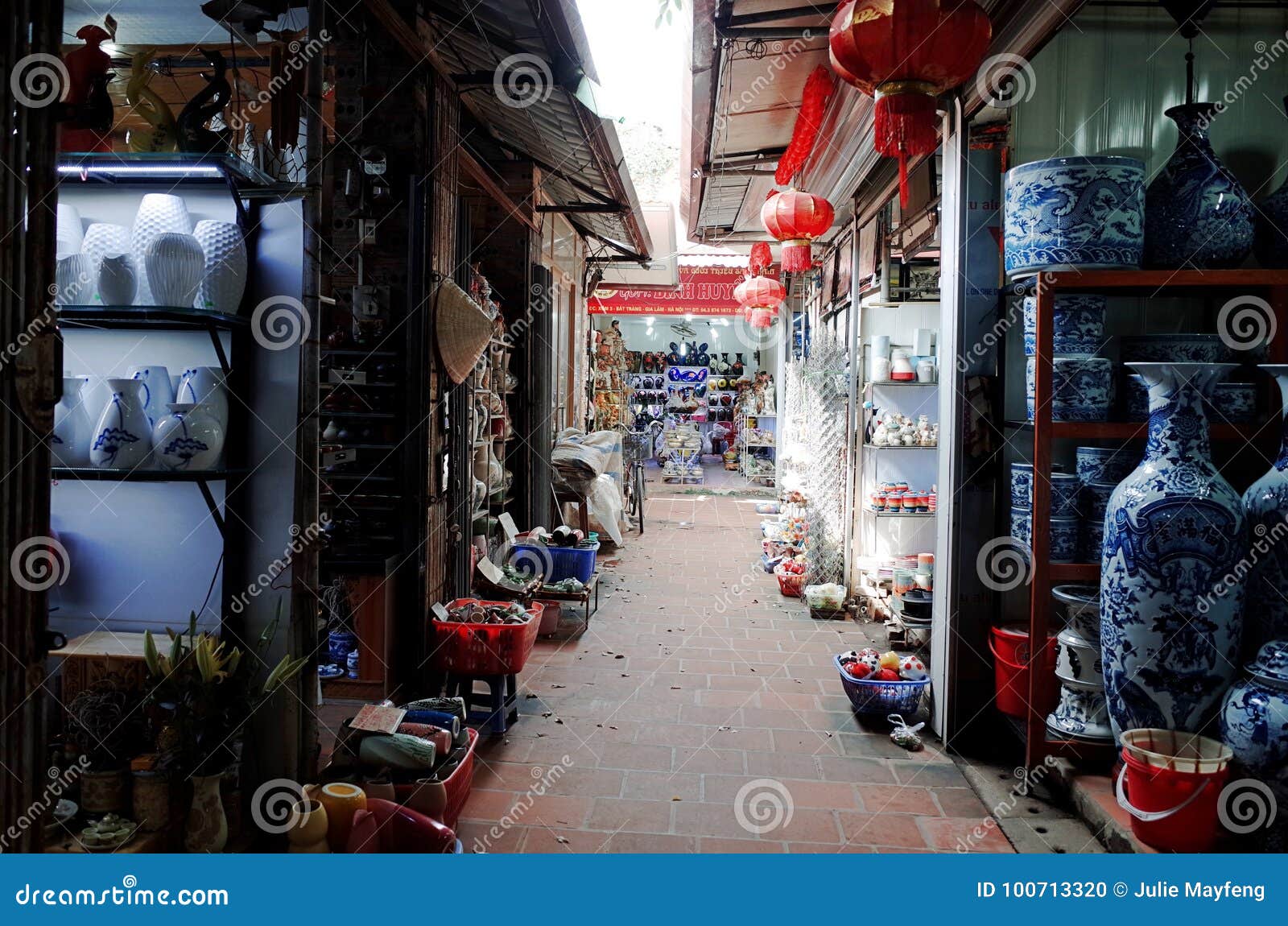News
Enjoy the Vibrant Color Palettes in Bat Trang Ceramics
Bat Trang ceramics is renowned for its rich history, exquisite craftsmanship, and especially its vibrant color palettes that bring life and spirit to each piece. The colors used in Bat Trang ceramics are more than just decorative—they tell stories of cultural heritage, artistic innovation, and a deep connection to nature. This article delves deeply into the enchanting world of Bat Trang ceramics, exploring the origins and evolution of its color palettes, the techniques used to achieve these hues, and how contemporary artisans continue to innovate while respecting tradition.
The Historical Roots of Bat Trang Ceramics

Before diving into the specific colors and techniques, it’s essential to understand the historical context behind Bat Trang ceramics. The village of Bat Trang has been a hub of ceramic production for over a thousand years, making it one of the most significant centers of pottery in Vietnam.
Bat Trang ceramics’ history is intertwined with Vietnamese culture and daily life, where the use of colors reflects both aesthetic preferences and symbolic meanings rooted in tradition.
Origins in Ancient Techniques and Materials
Bat Trang’s ceramic artistry began during the Ly Dynasty (11th century), when local potters started refining their craft using local clays and natural pigments. Early ceramics were often monochromatic or featured simple blue-and-white patterns influenced by Chinese porcelain imported through trade routes.
The choice of materials significantly influenced the palette. Artisans used minerals like cobalt oxide for blues, iron oxide for reds and browns, and manganese for purples and blacks. These natural pigments gave birth to the signature colors still evident in Bat Trang ceramics today.
This reliance on natural materials created a direct link between the environment and the art form, with each season and region contributing subtle variations in tone and texture.
Evolution Through Dynasties and Trade
Over centuries, as Vietnam encountered different cultures through trade and colonization, new colors and techniques were introduced. The influence of Ming Dynasty porcelain introduced more complex blue-and-white designs, while French colonial presence brought new glazing technologies.
Throughout this evolution, Bat Trang potters maintained a unique identity by integrating foreign influences with indigenous motifs and colors inspired by local landscapes and folklore.
This historical layering explains why Bat Trang ceramics feature such a diverse yet harmonious range of colors—from deep indigos and rusty crimsons to soft pastel greens and yellows—each representing a chapter in the village’s enduring artistic legacy.
Symbolism Behind Key Colors
In traditional Bat Trang ceramics, colors carry symbolic significance deeply ingrained in Vietnamese culture.
- Blue: Often representing calmness, wisdom, and protection. Blue glazes created with cobalt oxide evoke serene waters and skies, reflecting an intimate relationship with nature.
- Red: A color of luck, happiness, and celebration, red tones were often reserved for ceremonial pieces.
- Green: Symbolizing growth, fertility, and harmony, green shades tie back to agricultural cycles and ancestral respect for the land.
- Yellow: Denoting royalty and prosperity, yellow glazes added brightness and warmth, balancing compositions visually and symbolically.
Understanding these cultural meanings enriches appreciation for the colorful expressions found in Bat Trang ceramics, demonstrating that every hue has a story and purpose beyond mere decoration.
Mastering the Color Techniques of Bat Trang Ceramics

The stunning vibrancy in Bat Trang ceramics doesn’t happen by chance. It is the result of meticulous mastery over various coloring and glazing techniques developed over generations.
This section explores the craftsmanship behind the colors—from sourcing raw materials to firing processes—that allows Bat Trang artisans to produce such vivid and lasting finishes.
Pigment Preparation and Sourcing
To create their iconic color palettes, Bat Trang potters begin by carefully selecting and preparing pigments derived from natural minerals.
Potters crush raw mineral ores and blend them with water or other binding agents to form a pigment paste suitable for painting or glazing. The quality of these pigments directly affects the intensity and stability of the final colors.
Artisans often maintain secret recipes passed down within families, involving precise ratios and purification methods to ensure consistency. This dedication to pigment preparation underscores the depth of knowledge embedded in Bat Trang ceramic traditions.
Experimenting with new sources while maintaining authenticity remains a dynamic part of the craft, revealing a balance between preservation and innovation.
Glazing Techniques and Their Impact on Color
Glazing plays a pivotal role in defining the texture, sheen, and durability of Bat Trang ceramics’ colors.
Traditional glazes often combine silica, ash, and alumina with metallic oxides to yield different hues under high temperatures. The interaction between glaze composition and kiln atmosphere can transform colors dramatically.
For example, reduction firing (limited oxygen) tends to deepen blues and greens, while oxidation firing (ample oxygen) enhances reds and yellows. Potters must precisely control kiln conditions to predict the outcome, a skill honed through decades of experience.
The layering of multiple glazes also adds complexity, enabling gradients and subtle shifts in color that give Bat Trang ceramics their distinctive visual richness.
Firing Processes: Bringing Colors to Life
The firing process is crucial in solidifying and amplifying the colors on ceramics.
Bat Trang potters traditionally use wood-fired or gas kilns, reaching temperatures around 1250°C (2272°F). The firing duration and atmosphere directly influence how pigments crystallize and bond to the ceramic body.
Mastery over firing involves timing the introduction of oxygen, controlling temperature ramps, and even adjusting fuel types. Slight variations can result in unexpected but often beautiful effects, producing unique, one-of-a-kind pieces.
Today, some artisans incorporate electric kilns for precision, blending modern technology with age-old techniques to maintain color vibrancy and structural integrity.
Hand-Painting vs. Stamping Color Application
Applying color to Bat Trang ceramics is both an art and a science, with two dominant methods: hand-painting and stamping.
Hand-painting allows for intricate designs, nuanced shading, and personal expression by the artist. Each brushstroke contributes to the dynamism of the color, revealing individual styles and emotions.
Stamping, using carved wooden or rubber stamps dipped in pigment, enables repetition of patterns with consistent color application, ideal for mass-produced items without sacrificing traditional aesthetics.
Both methods require skillful management of pigment thickness and drying times to prevent smudging or fading, highlighting the technical expertise underpinning Bat Trang ceramics’ vibrant look.
Exploring the Iconic Color Palettes of Bat Trang Ceramics

The true magic of Bat Trang ceramics lies in the curated color palettes that define its aesthetic identity. These colors are not only visually striking but also culturally resonant.
This section examines the most iconic palettes, how they are combined in pieces, and the emotional and symbolic impact of these combinations.
Classic Blue and White Palette
Perhaps the most globally recognized Bat Trang palette is the classic blue and white combination.
Originating from early Chinese porcelain influences, this palette uses deep cobalt blues painted on a white background made from fine kaolin clay.
The contrast between the crisp white and the vivid blue creates timeless elegance, evoking a sense of purity and tranquility.
Common motifs include lotus flowers, dragons, and waves, painted with fluid brushstrokes that emphasize movement and life.
The enduring popularity of this palette lies in its versatility; it complements both traditional and contemporary interiors, bridging cultural and temporal divides.
Earth Tones and Natural Hues
Another hallmark of Bat Trang ceramics is its extensive use of earth tones—warm browns, rustic oranges, muted reds, and soft creams.
These colors arise naturally from the clay body and iron oxide glazes, evoking a grounded, organic feel.
Pieces with earth tone palettes often feature motifs inspired by rural Vietnamese life—bamboo, rice paddies, farm animals—reflecting a deep reverence for nature and simplicity.
This palette tends to appeal to those seeking a connection to heritage and authenticity, underscoring the philosophy that beauty arises from the natural world.
Pastel Shades and Modern Interpretations
In recent decades, Bat Trang artisans have expanded their palette to include pastel shades like soft pinks, light blues, and gentle greens.
These colors cater to modern sensibilities focused on subtlety and minimalism while maintaining traditional forms and patterns.
Pastels open up new avenues for artistic expression, allowing for delicate floral designs and abstract patterns that evoke feelings of calmness and renewal.
The integration of pastels exemplifies the dynamic nature of Bat Trang ceramics—rooted in tradition yet responsive to contemporary tastes.
Bold and Contrasting Color Combinations
Although less common, bold color combinations featuring bright reds, yellows, and greens also appear in Bat Trang ceramics, especially in festival ware and decorative pieces.
These vibrant contrasts create energetic and joyful effects, celebrating occasions such as Tet (Vietnamese New Year) and weddings.
Artists use these palettes to convey optimism, prosperity, and communal harmony, imbuing objects with festive spirit.
Such daring use of color showcases the diversity and adaptability of Bat Trang ceramics, proving that tradition and experimentation coexist harmoniously.
Contemporary Trends and Innovations in Bat Trang Ceramics Color Use

While Bat Trang ceramics honor their historical roots, contemporary artisans continuously push creative boundaries, experimenting with new colors, materials, and techniques.
This section looks at how modern trends are reshaping the color landscape of Bat Trang ceramics, keeping the tradition alive in a globalized world.
Incorporation of International Influences
Global exposure has introduced Bat Trang artists to international color theories and styles—from Scandinavian minimalism to Japanese wabi-sabi aesthetics.
These influences inspire new color pairings, such as combining muted neutrals with vibrant accent colors, or using matte finishes alongside glossy ones.
Artists selectively adopt global trends while preserving Vietnamese symbolism, creating hybrid works that resonate across cultures.
This fusion broadens Bat Trang ceramics’ appeal and demonstrates the flexibility of its artistic language.
Eco-Friendly and Sustainable Coloring Methods
With increasing environmental awareness, some Bat Trang potters are exploring eco-friendly pigments derived from sustainable sources.
Natural dyes extracted from plants, minerals sourced responsibly, and low-impact glazes reduce chemical usage and waste.
These practices align with Vietnamese values of harmony with nature and community well-being.
The challenge lies in maintaining color vibrancy and durability while adopting greener methods—a frontier for innovation in the Bat Trang ceramics world.
Digital Technology and Color Precision
Technology is also transforming color application, with digital tools enabling precise design prototyping and color matching.
Some studios use computer software to experiment with color schemes before manual execution, optimizing aesthetics and reducing material costs.
Digital printing onto ceramic surfaces offers new possibilities for detailed multicolor patterns, expanding design complexity beyond hand-painting limitations.
However, many artisans remain cautious to preserve the tactile and human elements inherent in traditional Bat Trang ceramics, blending tech with touch.
Customization and Personalized Color Schemes
Contemporary demand for customization drives potters to offer personalized color palettes tailored to individual preferences.
Clients may request specific hues matching interior decor or symbolic meanings relevant to personal stories.
This bespoke approach enhances emotional value and connects customers more intimately with the craft.
Custom colors often require experimental glaze formulations and firing tests, showcasing artisans’ adaptability and commitment to client satisfaction.
Experiencing Bat Trang Ceramics: Where to See and Purchase
To truly appreciate the vibrancy of Bat Trang ceramics, one must experience them firsthand—in workshops, galleries, or markets in Vietnam and internationally.
This final section guides readers on how and where to immerse themselves in Bat Trang’s colorful ceramic art.
Visiting Bat Trang Village
Bat Trang village, located near Hanoi, is the heartland of this ceramic tradition.
Visitors can tour pottery studios, watch craftsmen at work, and participate in hands-on workshops to understand the color application process intimately.
The village is dotted with shops selling a wide range of colorful ceramics, from everyday tableware to elaborate decorative pieces.
Experiencing the village’s vibrant atmosphere enriches understanding of how color, culture, and craftsmanship intertwine in Bat Trang ceramics.
Museums and Exhibitions Highlighting Bat Trang Ceramics
Several museums in Vietnam and abroad feature collections of Bat Trang ceramics, showcasing the evolution of color palettes and techniques.
Notable institutions include the Vietnam Museum of Fine Arts and specialized ceramic exhibitions that contextualize Bat Trang’s colors within broader art history.
Exhibitions allow viewers to study the delicate interplay of colors closely, appreciate rare antique pieces, and observe thematic groupings that illuminate cultural narratives.
Online Marketplaces and Artisan Platforms
For those unable to visit Vietnam, numerous online platforms provide access to authentic Bat Trang ceramics.
Reputable websites offer detailed images emphasizing color vibrancy, artist profiles explaining their color choices, and options for custom orders.
Supporting these platforms helps sustain the artisan community and promotes wider appreciation of Bat Trang ceramics’ chromatic richness worldwide.
Collecting and Caring for Bat Trang Ceramics
Collectors interested in Bat Trang ceramics should understand how color interacts with care practices.
Proper handling, avoiding harsh cleaning chemicals, and protecting pieces from extreme light and temperature fluctuations help preserve color vibrancy.
Knowledge about firing temperatures and glaze types aids in identifying authentic pieces and ensuring longevity.
Collecting Bat Trang ceramics is not merely amassing beautiful objects but participating in a living tradition where color bridges past and present.
Conclusion
Bat Trang ceramics stand as a vibrant testament to the power of color in conveying cultural identity, artistic skill, and emotional resonance. From ancient mineral-derived pigments to contemporary pastel innovations, the palettes used in Bat Trang ceramics reveal a dynamic interplay between tradition and modernity. The mastery of glazing and firing techniques ensures that each color sparkles with life, embodying centuries of Vietnamese history and aesthetics. Whether through the timeless elegance of blue and white, the earthy warmth of rusts and browns, or the fresh energy of bold contrasts, the colors of Bat Trang ceramics invite us to explore stories woven into clay and glaze. As artisans blend old and new, nature and technology, Bat Trang ceramics continue to brighten spaces and hearts worldwide, celebrating the enduring beauty of vibrant color palettes.
